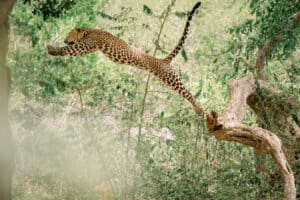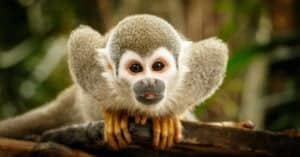
Monkeys are adorable animals. They are also intelligent and have their own unique traits. Currently, there are over 260 species of monkeys, divided into two types: Old World monkeys and New World monkeys. These sweet mammals live in nearly all parts of the world, but how different are each of these species? Follow along to learn more about the 10 species of monkey breeds you should know!
1. The Golden Lion Tamarin
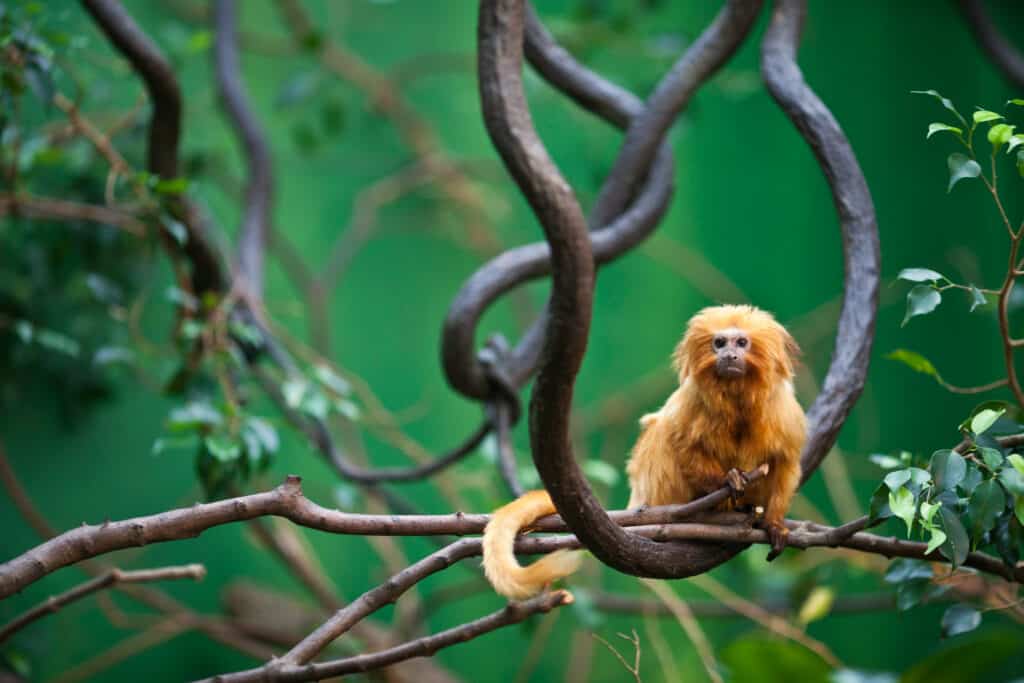
The Golden
Lion
Tamarin is an endangered species of New World Monkey that lives in Brazil.
©iStock.com/jeancliclac
The first monkey on this list is the golden lion tamarin. As its name suggests, golden lion tamarins have bright reddish orange pelage. They are easy to spot with their fiery red fur. Golden lion tamarins also have a distinctive mane with very long hair around their face and in their ears. They are about 10.3 inches long and weigh 1.37 pounds. Golden lion tamarins are small New World monkeys belonging to the family Callitrichidae. These small animals are an endangered species native to the Atlantic coastal forests of Brazil. It’s likely there are only 3,200 wild golden lion tamarins in the wild and 490 in captivity.
2. The Golden Snub-nosed Monkey
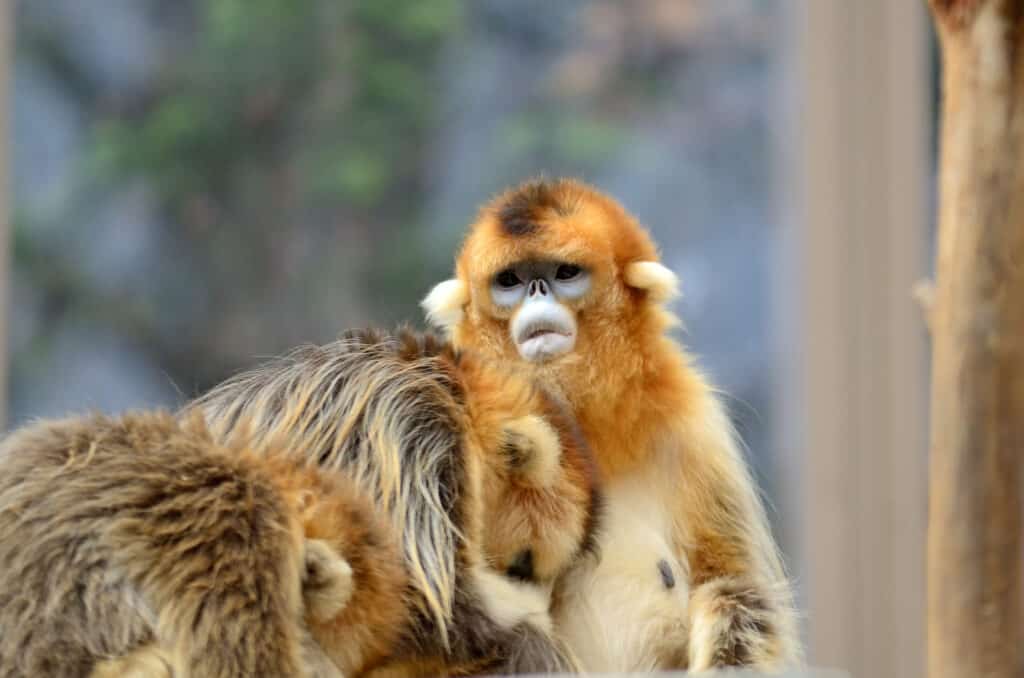
Golden snub-nosed monkeys can survive elevations as high as 11,200 feet.
©iStock.com/Cn0ra
Next, we have the golden snub-nosed monkey, an Old World monkey native to the mountainous forests of central and Southwest China. These monkeys can survive elevations as high as 11,200 feet. They are an endangered species and easy to tell apart from other monkeys. Golden snub-nosed monkeys have a unique appearance. The hair on their bodies differs in color and length. For example, they have golden guard hairs on their backs and cape area but deep brown hair on their arms, outer thighs, and crown to nape. Golden snub-nosed monkeys live in complex social groups. For instance, some golden snub-nosed monkeys live in groups of 5 to 10, while others live in bands of about 600.
3. The Mandrill
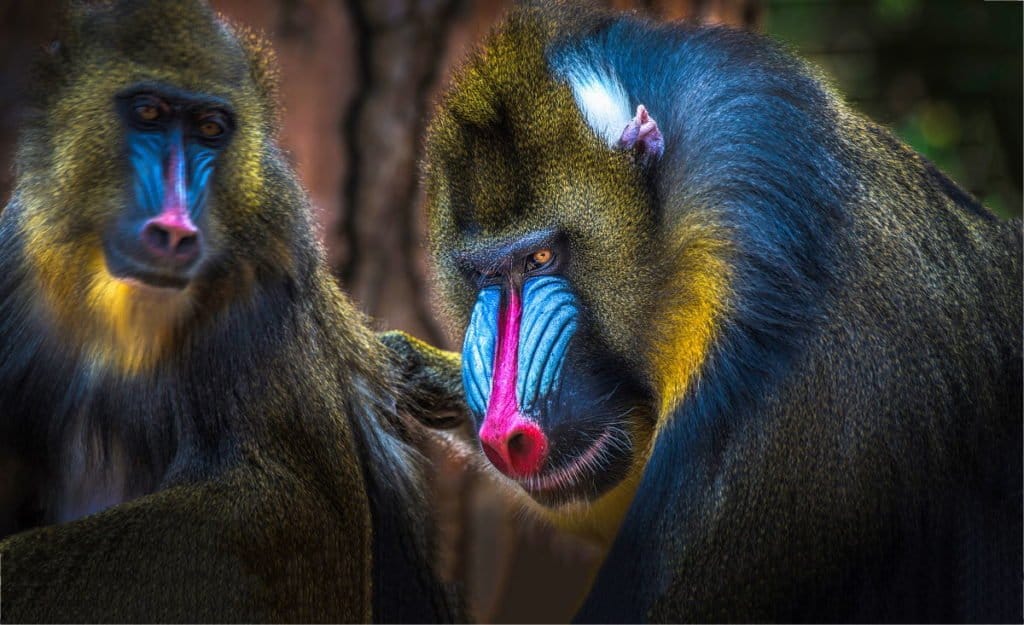
Mandrill monkeys are known for their bright red noses and the red strip running down the middle of their face.
©Nikolay 007/Shutterstock.com
One of the easiest to distinguish monkey species is the mandrill. They are large Old World monkeys found across west central Africa. Mandrills are one of the most colorful monkey species in the world. They have large heads and stock bodies. Male mandrills are larger than females. Mandrills mainly have brown hair; however, their beards are yellow-orange and sparse. Mandrills also have stiff white whiskers surrounding their lips, like a mustache. These large monkeys are especially known for their bright red noses and the red strip running down the middle of their face. While female mandrills are also colorful, their hair is not as bright. These wild primates also live in massive hordes. Experts have observed supergroups of up to 845 mandrills. Currently, the mandrill is listed as vulnerable, but the total population is unknown.
4. The Brown Spider Monkey
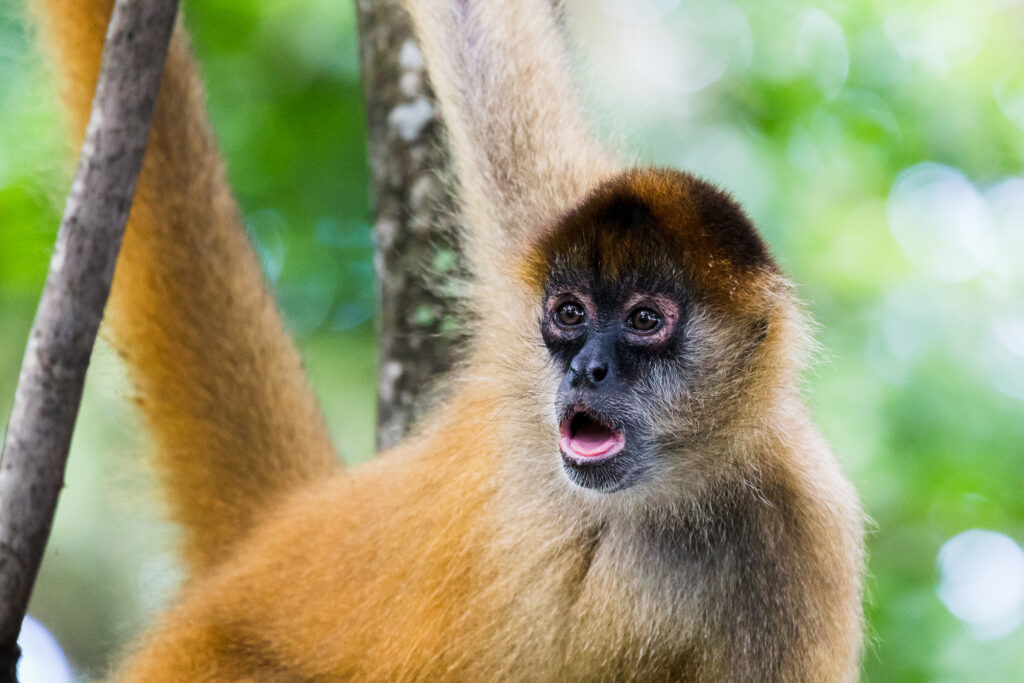
Brown spider monkeys have long, thin limbs and prehensile tails that move like a fifth limb.
©Jason Wells/Shutterstock.com
Brown spider monkeys are critically endangered. They belong to the Atelidae family and are a type of New World monkey. These monkeys are native to forests in northern Colombia and northwestern Venezuela. Brown spider monkeys have long, thin limbs and prehensile tails that move like a fifth limb. The tip of the tail is very flexible. Adult brown spider monkeys weigh between 17 and 20 pounds. The average length of their bodies is 20 inches long. Brown spider monkeys also have large brown eyes, but while uncommon, some have blue eyes. These flexible and climbing monkeys spend most of their time high in trees, only coming down for water and to eat soil. Over 75% of a brown spider money’s diet is lipid-rich fruit.
5. The Emperor Tamarin
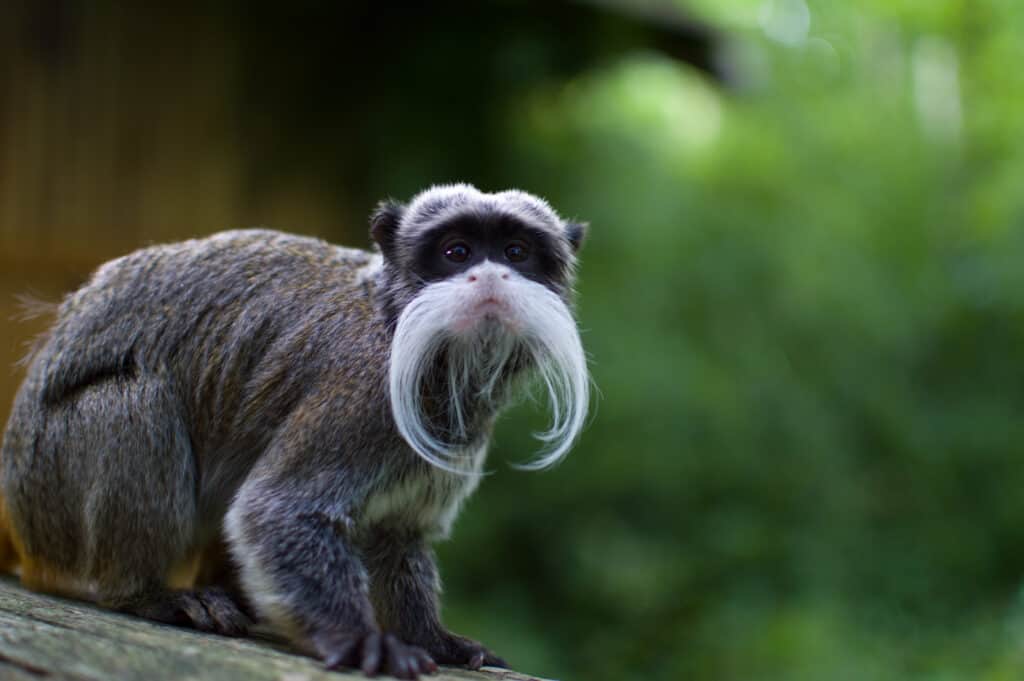
The Emperor Tamarin is a New World Monkey that is the size of a
squirrel
.
©iStock.com/Jharpy
The emperor tamarin has a unique appearance. This small monkey lives in northern Brazil, east Peru, north Bolivia, and the southwest Amazon Basin. Emperor tamarins have long white mustaches and tiny white hairs on their chin. It’s believed emperor tamarins were named because they resemble the German emperor Wilhelm II. Rarely do emperor tamarins grow back 10 inches long. The average emperor tamarin monkey weighs 18 ounces. Emperor tamarins have colorful bellies with red, white, and orange hairs. Emperor tamarins are friendly and playful in the wild. In captivity, they are social with humans and form bonds. They also communicate with long vocalizations, which sometimes humans can hear from about 492 feet away.
6. The Central American Squirrel Monkey

Experts estimate there are only about 5,000 Central American squirrel monkeys left in the wild.
©Wirestock Creators/Shutterstock.com
The Central American squirrel monkey is a squirrel monkey, also known as the red-backed squirrel monkey. They are found throughout the Pacific coast of Costa Rica and Panama. Central American squirrel monkeys have a short range. They are listed as endangered. Experts estimate there are only about 5,000 Central American squirrel monkeys left in the wild, but the exact number is unknown. In the 1970s, though, there were still 200,000 in the wild. Central American squirrel monkeys have orange backs and white undersides. Their faces are white with black rims emphasizing their eyes. Most adults weigh about 21 pounds and 34 ounces and are 10.5 to 11.5 inches long, not including their tails. Central American squirrel monkeys spend a lot of time in trees and use all four legs to move. They live in groups of 20 to 75 monkeys.
7. The Proboscis Monkey
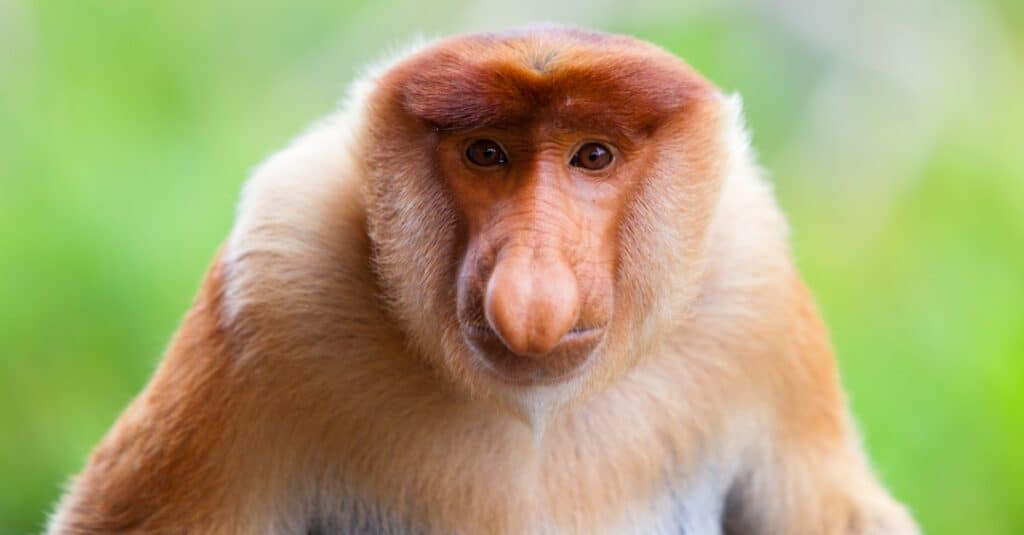
Proboscis monkeys use their large noses to attract mates.
©David Evison/Shutterstock.com
The proboscis monkey is an Old World monkey with a unique appearance. It’s best known for its long reddish-brown nose and long tail. They are one of the largest monkey species native to Asia, specifically Borneo, the third largest island in the world. Male proboscis monkeys weigh between 35 to 50 pounds. Females are a lot smaller, rarely weighing over 26 pounds. Proboscis monkeys live in groups with only one adult male. However, some proboscis monkeys are solitary. Separate groups gather together to sleep at night in a sleeping site. Proboscis monkeys mainly communicate with vocalizations. Males specifically have a special honk they use on infants for reassurance. These large monkeys mainly eat fruit and plants but sometimes consume insects. Experts estimate they eat about 55 plant species. Sadly, because of habitat loss, they are listed as endangered on the IUCN Red List of Threatened Species.
8. The Silvery Marmoset
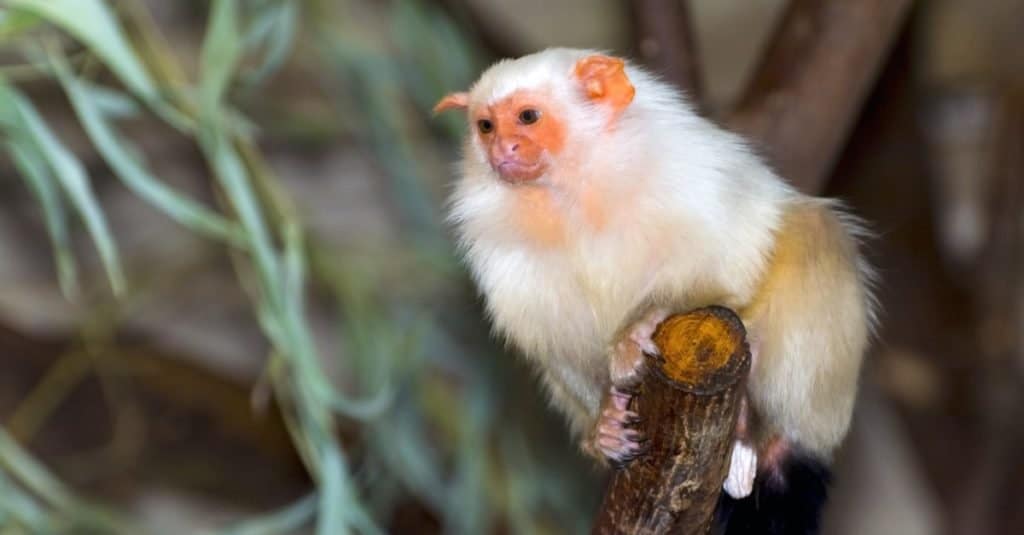
Silvery Marmosets have claws on their fingers rather than nails, which helps them grip the bark of the trees they climb.
©belizar/Shutterstock.com
The silvery marmoset is a New World monkey listed on the IUCN Red List of Threatened Species as the least concern. They are native to the eastern Amazon Rainforest in Brazil. Silver marmosets have white-silver hair, except for their dark tails. They also don’t have hair on their ears, which are typically light pink. These small animals typically measure between 7.1 to 11 inches long. They also weigh about 11 to 14 ounces. Silvery marmosets live in small groups and spend most of their days climbing trees with their claws and resting in tree hollows. While silvery marmosets can eat fruits and plants, most of their diet consists of tree sap.
9. The Dusky Leaf Monkey
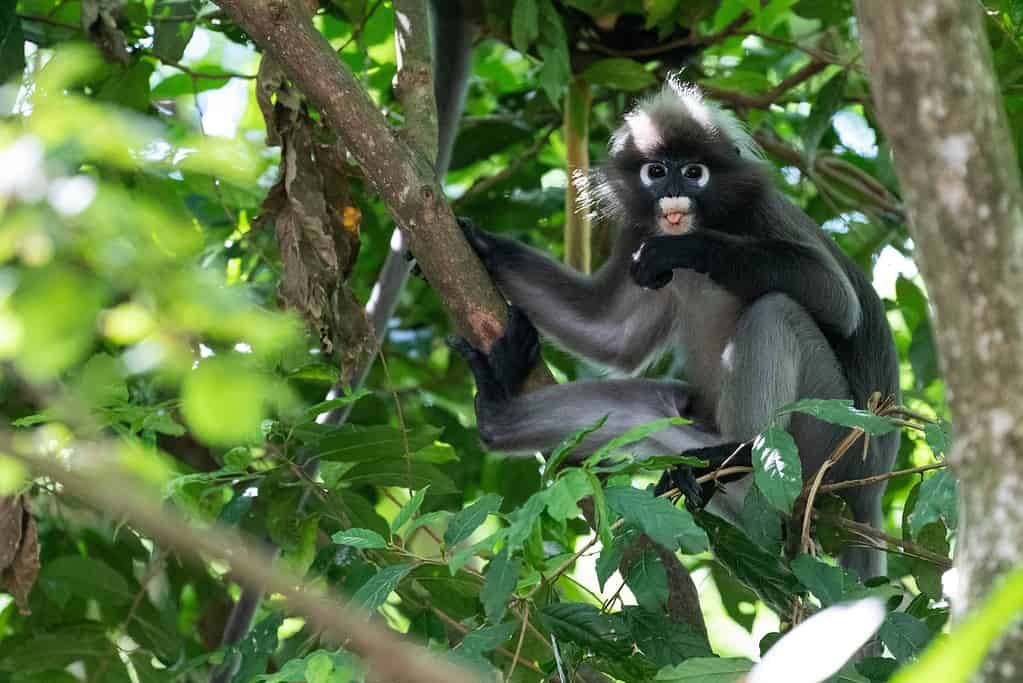
No two dusky leaf monkeys are exactly alike.
©Ricky Of The World/Shutterstock.com
The dusky leaf monkey is an endangered primate in the family of Cercopithecidae. You can find this adorable monkey throughout Peninsular Malaysia, Myanmar, Thailand, and sometimes Singapore. While dusky leaf monkeys aren’t native to Singapore, they are powerful swimmers, leading experts to believe some have swum to the country. Interestingly, no two dusky leaf monkeys are exactly alike. They vary in coloration. Some dusky leaf monkeys are brown, grey, or black. However, all baby dusky leaf monkeys are born with bright orange coats. While more research is needed, it’s believed the species is sexually dimorphic, as males are about 12% larger than females.
10. The Chacma Baboon
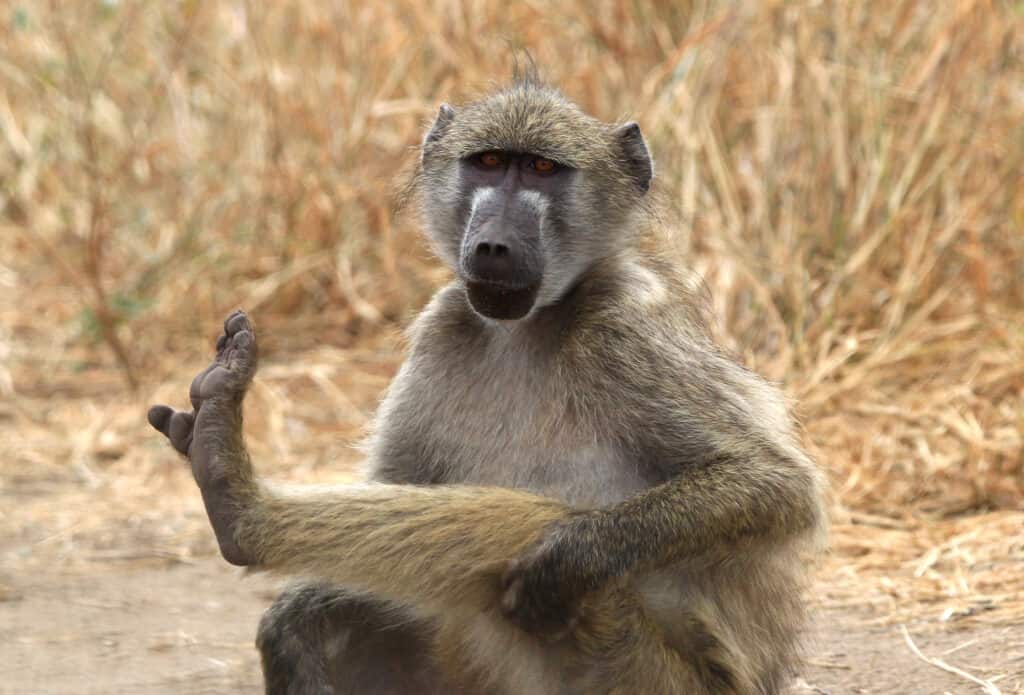
The chacma baboon has a long body, ranging from 20 to 45 inches long.
©iStock.com/damien calmel
While there are over 200 more monkey species, the chacma baboon is the last monkey species on our list. It’s a large baboon from the Old World monkey family and one of the largest in the world. The chacma baboon has a long body, ranging from 20 to 45 inches long. Its tail is nearly as long, with the average length measuring between 18 to 33 inches. Chacma baboons are also heavy, but males are about 2.2 pounds heavier than females. These large baboons are omnivores and opportunistic feeders, mainly consuming plants and insects. Chacma baboons also have many predators, but their main predator is the leopard.
The photo featured at the top of this post is © Ricky Of The World/Shutterstock.com
Thank you for reading! Have some feedback for us? Contact the AZ Animals editorial team.




